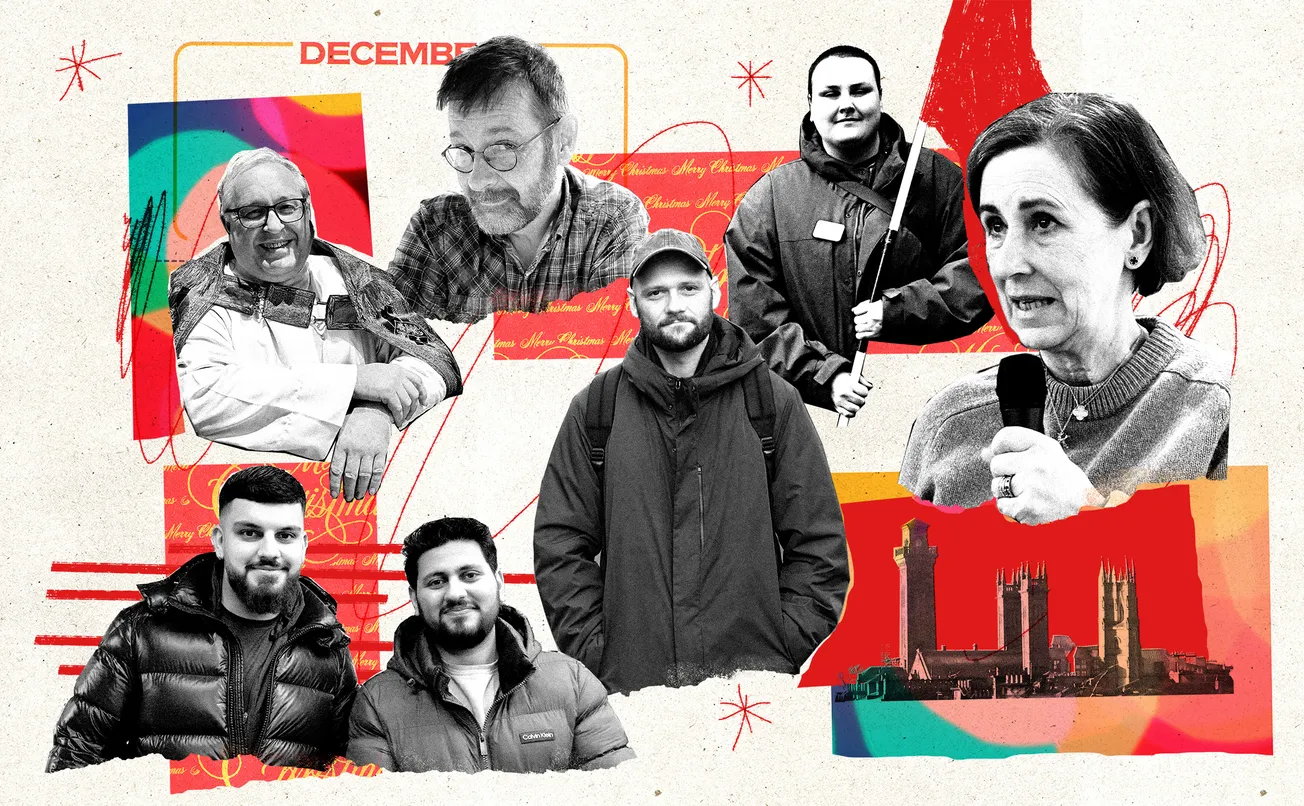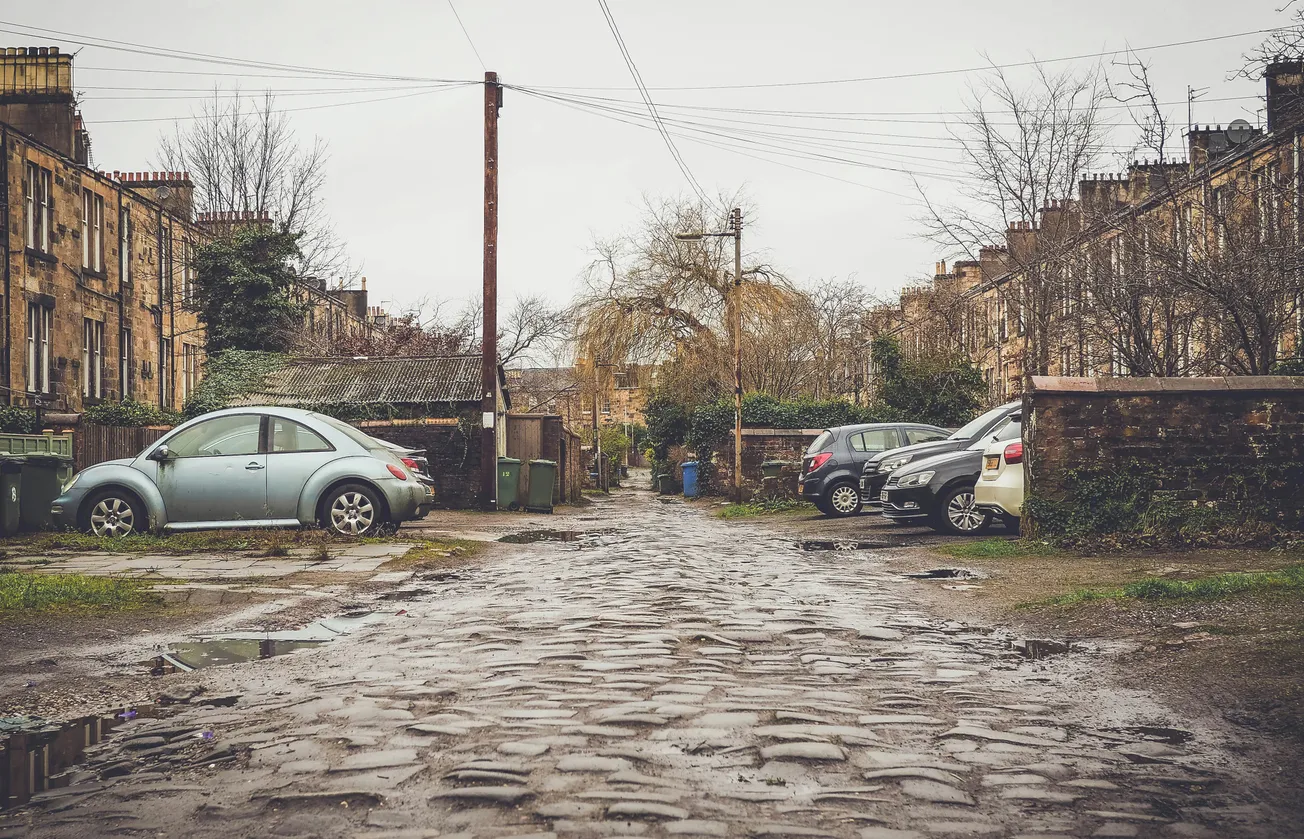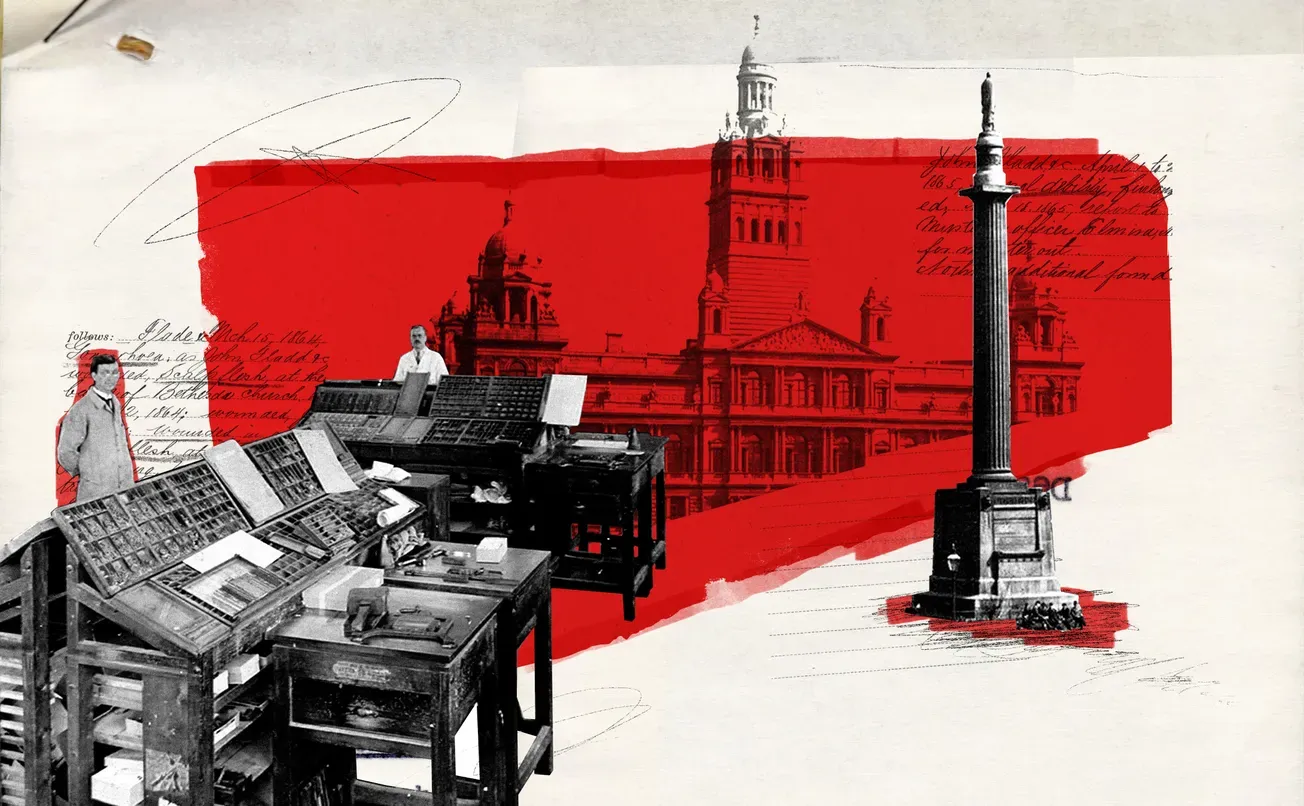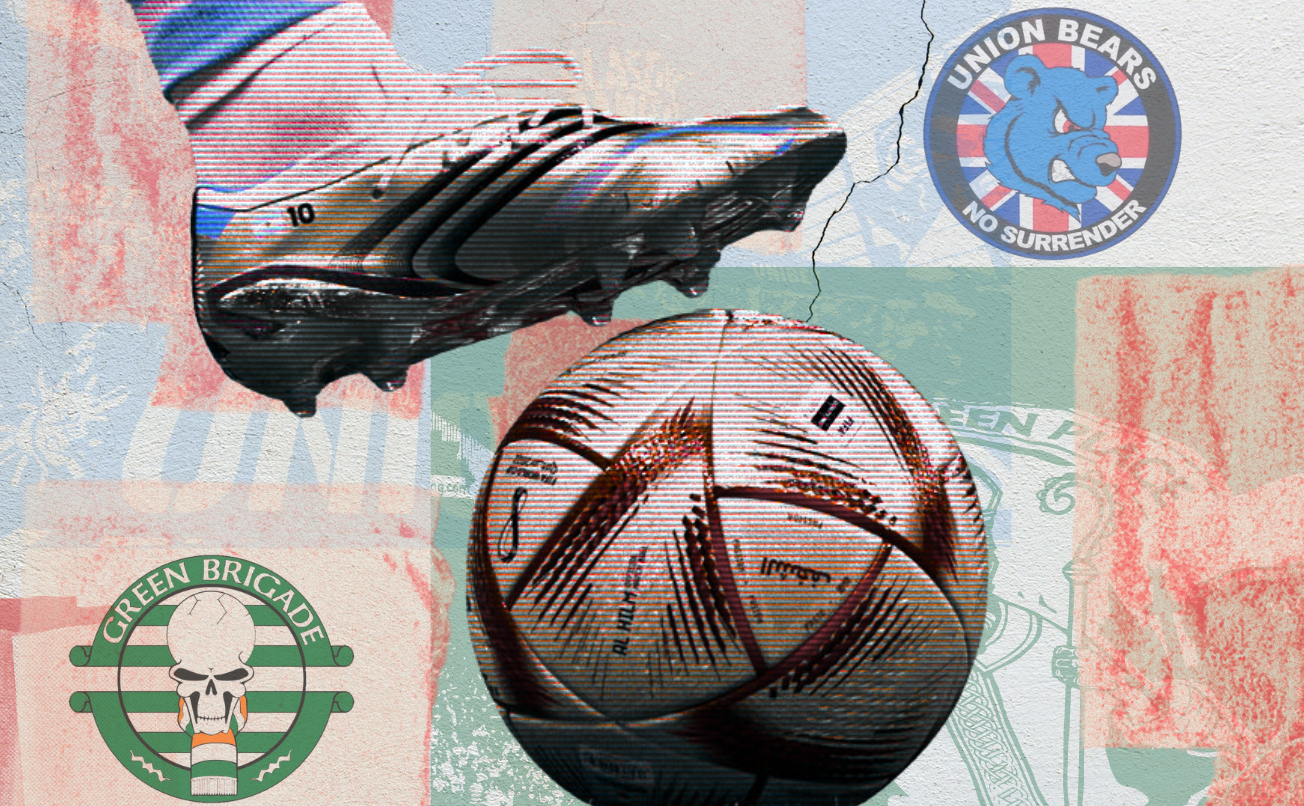I’m high up in the top-tier of the main stand at Ibrox, marvelling at the panoramic views. With 10 minutes until kick-off, anticipation among the assembled blue-nosed faithful is simmering away nicely. This is a special occasion after all, a clash of cultures and a fixture steeped in history. The famous blue of Rangers versus their opponents from the east, who wear green and white and bear a shamrock on their chest.
No, not those ones. Alas I haven’t managed to bag a ticket to the Old Firm. I’m here on a muggy July evening to watch Rangers take on Athenian club Panathanaikos. Or, as the fan sitting next to me refers to them, “The Greek Tims.”
At stake is a place in the next round of qualifiers for the Champions League. It’s also the first competitive match of the campaign for Rangers, as they look to put recent disappointments behind them and enter a fresh era under new American owners and head coach Russell Martin.
But tonight I’m just as interested in what’s happening in the stands as down on the pitch. As the stadium announcer reminds us, Rangers are under a suspended stand closure sanction from governing body UEFA; should there be ‘racist and/or discriminatory behaviour’ in any area of the stadium, the Copland Stand will be closed for a future European match. The club are serving probation as a result of a banner held up in the Copland Stand by select members of the ultras group the Union Bears, during a game against Turkish side Fenerbahçe, in March. It read: “Keep woke foreign ideologies out. Defend Europe.”
The same Union Bears also caused a stir domestically a few months later with their much larger choreographed display (known as a tifo) at the final Old Firm derby of the season. It featured a giant image of Rangers icon Graeme Souness, in his mid-80s moustachioed pomp, pointing a shotgun towards the camera. An accompanying message instructed: “Take aim against the rebel scum.” First Minister John Swinney quickly branded it “unacceptable”, while Rangers themselves came out to say it “went too far”.
Most interpreted ‘rebel scum’ as an allusion to the Irish Republican movement, despite counter-claims that the Union Bears were paying edgy tribute to the world’s most popular movie saga on International Star Wars day (the phrase ‘rebel scum’ features in the franchise).
Despite the controversy, as kick-off approaches and their black-clad members begin to unfurl their next composition, I can’t deny I’m fascinated to see what awaits us. Against a backdrop of ancient Greek ruins rises a towering representation of Britannia, bearing a union flag shield and flanked by a mighty lion, while below, fans spell out the caption: “The obstacles become our way”. As far as I can tell, this is a reworking of a quote from Marcus Aurelius’s Meditations.
Glasgow Rangers tifo “welcoming” Panathinaikos leaves no doubt about the club’s politics pic.twitter.com/Hcu12LacgG
— Alexander Kitroeff (@Kitro1908) July 23, 2025
Many may object to the imperial iconography, and perhaps the design is a sneak Elgin marbles diss to wind up the visitors, but the display — surely approved by the club beforehand — passes without incident. It’s objectively an impressive visual spectacle. In any case it seems to have the desired effect, as Rangers overcome some early wobbles to earn a 2–0 win, setting them up nicely for the return leg next week, powered on by the constant drumming and chanting of the boisterous fans in the Copland stand.
My own footballing allegiances lie elsewhere, and I may have customarily referred to Ibrox as Mordor in my younger days, but I have to say I’ve enjoyed my evening here. Tonight is a powerful demonstration of Glasgow’s unique embrace of ultras culture, which is reinvigorating the city’s reputation as an exciting place to watch football.
Ultra origins
While Glasgow could once boast of being the greatest footballing city in the British Isles — the place that forged top football men like Stein, Busby, Shankly and Ferguson — not many would have the gall to make the same claim now. In terms of producing talent — and teams — that perform at the highest level, we’ve been left behind by the major English metropolises. But there’s one aspect where Glasgow indisputably holds onto its superiority: atmosphere.
This is partly because the hyper-marketisation of the English Premier League has polished off the rougher edges of matchday experience in its creation of a shiny international consumer product. Down south, slick consumerist domes are outnumbering historic grounds and tourists splash out hundreds of pounds for tickets. You’re more likely to come away from the stadium impressed with the loaded katsu fries than you are awed by the fan experience.
Being locked out of the big money has left the Scottish game lagging on the pitch, but one positive side effect is that it feels considerably less sanitised than its English equivalent. With no lucrative international broadcast revenue, clubs at the top of the pyramid in Scotland rely far more on match-going fans to keep the coffers replenished.
Fan empowerment has been the result. At many grand old clubs — Hearts, Motherwell or Partick Thistle — this has seen organised fan groups claim majority ownership and a stake in how these cherished local institutions are run. At Celtic and Rangers, however, the two giants whose economic power crushes all others, the sense of alienation plaguing the English game has been staved off thanks in part to the emergence of impressive ultras groups who electrify the stands.
The term ‘ultras’ originates in Italy in the late 1960s, when groups of fanatical football supporters started to congregate behind the goals (Curvas) and work together in unison to support their team through coordinated displays (Tifos), pyrotechnics, and rhythmic chanting and bouncing to the beat of a drum. At roughly the same time, the same thing was happening in Argentina, where the groups became known as Barras Bravas. Over the decades the culture spread, becoming an essential part of the matchgoing experience at iconic stadiums across the globe, from La Bombonera in Buenos Aires to Westfalenstadion in Dortmund.
Enjoying this edition? You can get two totally free editions of The Bell every week by signing up to our regular mailing list. Just click the button below. No cost. Just old school local journalism.
This cosmopolitan tradition first made its way onto the terraces of Scotland at the turn of the millennium. The pageantry of it all — getting all dressed up to march to a drum beat and wave flags around — may make you think that Rangers fans would be the first to adopt the practice. But the credit for first ultras groups in Scotland goes to the Red Ultras of Aberdeen, who formed in 1999 and disbanded in 2010.
They were followed in 2006 by the Green Brigade, Celtic’s famous ultras who remain active to this day. Ultras groups are notoriously averse to speaking to journalists, preferring to post statements on social media and communicate through banners. While the exact identity of the Green Brigade’s members and founders is protected — at least publicly — it was established by former members of a previous fan group called the Jungle Bhoys. They wanted to address what they perceived as a declining atmosphere at Parkhead by importing the ultras culture they had witnessed on their travels, and which some visiting teams had brought to Glasgow.
Outstanding tifo from the Green Brigade today 👏🏼 I’ll get the pictures up later. pic.twitter.com/hUB25IdNQ0
— Hargi (@hargi_) July 31, 2022
They also saw this as a means to uphold Celtic’s association with anti-fascism and republicanism, and address political issues in the stadium, similar to other left-wing supporters, like those of St. Pauli in Hamburg, or Livorno, Bologna and Genoa in Italy. Their shadow selves across town, the Union Bears, emerged exactly one year later in similar circumstances: formed from splinters of a fan group known as the Blue Order, they too saw ultras culture as a way to bring colour and dynamism to the stadium. Although they would never admit it, it’s likely they sprung up as a response to the Green Brigade. These two groups have since grown to become the most significant factor in maintaining the noise for which both Ibrox and Celtic Park remain famous.
If we could only use one word to explain why Glasgow is at the forefront of ultras culture in Britain, the obvious choice would be ‘tribalism’. The Old Firm derby has always been one of the most all-encompassing rivalries in world football, with both camps marked out by their opposing socio-political identities and cultural symbols. It’s the only one like it in Britain; Spurs and Arsenal might hate each other but their competition isn’t also marked along sectarian lines. Add to that Glasgow’s — and Scotland’s — vibrant culture of musical pageantry and tradition, and you've got fertile ground for ultras.
But there’s another reason too: ultras culture creates interest and drama when it’s lacking on the pitch. Social media also has a role to play. Much like clubs themselves, ultras groups post end-of-season highlight compilations on YouTube, but instead of best goals you have clips of wee guys in balaclavas spray-painting over rival tags on motorway overpasses, set to happy hardcore.
What’s happening in Glasgow has already spread across Scotland and is now starting to register in England, thanks to the European influence. When South London outfit Crystal Palace won their first ever FA Cup back in May, they were helped in no small part by their active ultras scene, the Holmesdale Fanatics. To date, they’re the only ultras group of real note in the Premier League, which likes to think of itself as the pinnacle of football.
New traditions
There’s sometimes confusion between ultras and the much-mythologised hooligans of the 1980s and 1990s. The latter subculture revolved around getting tanked up and fighting opposing fans, often while wearing Fred Perry or Stone Island. Ultras on the other hand are focused primarily on creating a full-throttle energy. It’s one often steeped in the theatricality of confrontation and hostility, but not so much on actual violence.
Which isn’t to say violence doesn’t happen. As the Union Bears prepared to march triumphantly down Paisley Road West after Tuesday’s game, I witnessed a few members break off from the group just outside the stadium to jump an unfortunate Panathanaikos fan. The visitor from Greece was left bloodied and bruised, while an older Rangers fan was knocked down while trying to come to his aid. The perpetrators skipped off into the anonymity of their black-clad masses, while a female Rangers fan in a pink and blue scarf screamed: “Absolute scum!” after them. But for what it’s worth — though to those affected, this will mean absolutely nothing — violence isn’t the core raison d’être of ultras culture.
That’s not the only break with British footballing tradition the arrival of ultras represent. Football crowds generally have a symbiotic relationship with their team; the noise they generate is a response to events on the pitch. If the crowd appreciates the team’s efforts, they will get behind them. If they don’t, they will moan and groan. This is reflected in standard-issue chants like: “You’re not singing anymore,” or “You only sing when you’re winning,” allowing for witty back-and-forths between the home and away sections.
~100 Bhoys and Green Brigade (Celtic) turn up to Hampden while Union Bears (Rangers) are setting up tifo this morning. ~100 UB attack back and Celtic run, several injuries from Celtic, none from rangers. pic.twitter.com/0aPYA6nCm0
— 𝐂𝐚𝐬𝐮𝐚𝐥 𝐔𝐥𝐭𝐫𝐚 𝐎𝐟𝐟𝐢𝐜𝐢𝐚𝐥 (@thecasualultra) February 26, 2023
Ultras subvert this dynamic by singing the entire time, no matter how the team is playing. But instead of spontaneous comedy chants or melodic anthems, the song of the ultras is repetitive and shouty, propelled by a constant drumbeat. Its relation to the game is different; the ultras do not respond to events on the pitch, they attempt to force them.
There’s huge power in such a spectacle. The combination of tifos, pyrotechnics, drumming, chanting and bouncing is what sociologist Emile Durkheim referred to as “collective effervescence”, energised communion which has the power to lift people out of their “profane” everyday existence and up into the realms of the “sacred”. All human societies cultivate such rituals, usually through religious ceremonies, or following the industrial revolution, the organised labour movement. In secularised, post-industrial Scotland of the early 21st century, football can feel like one of the last outlets left for people to fulfill this human need en masse.
But this break with tradition is one reason many older fans reject ultras, seeing them as an unwelcome and dumbed-down intrusion into our established footballing culture. Or, as an older Rangers fan memorably put it when interviewed by The Bell a few months back: they’re just wee “bams” who “don’t know their Maw from their Da”.
It’s not hard to see why many take a dim view of ultras and their antics. They seem to reveal the full house of the city’s most frequently diagnosed woes: alcohol and drug abuse, antisocial behaviour, herd mentality, sectarianism. The Scottish establishment at Holyrood has for a long time had a heavy-handed and moralising attitude towards football fans, typified by the 2012 Offensive Behaviour at Football and Threatening Communications Act, which proved so unpopular that in 2018 it became the first part of Scottish Parliament legislation to be entirely repealed.
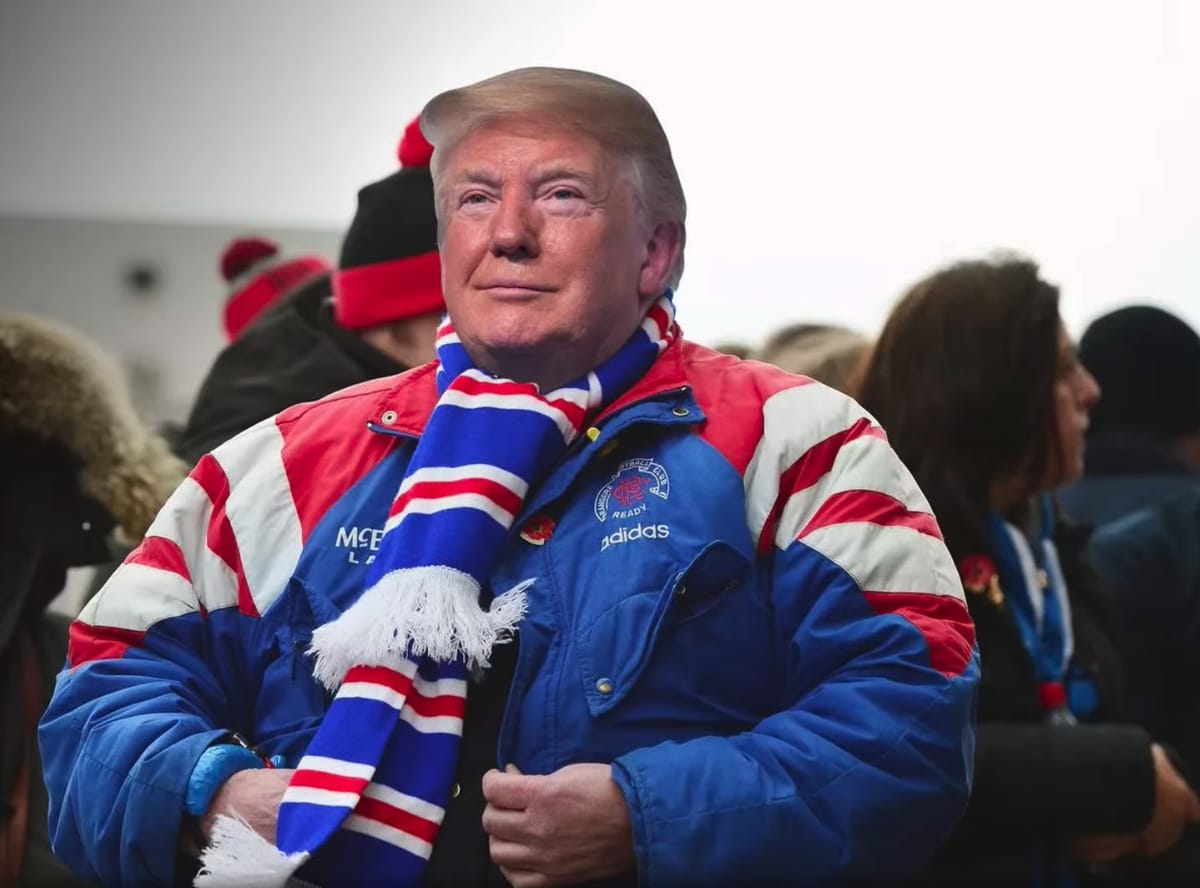
There has been a strong whiff of classism about this historic suspicion of football fans, of laws being made by people who have never set foot in a stadium, but I don’t think it’s fair to dismiss an aversion to ultras specifically as pearl clutching, as some do. There is a willfully antisocial element to much of the culture, marches to and from games will invariably leave a trail of discarded Bucky bottles with the odd small ziplock baggy. Ross McGill, a Dubai-based drug kingpin being blamed for the spate of violence which has erupted across Scotland in the past year, previously made a name for himself as a leader and spokesperson for the Union Bears. Unsavoury scenes of pedestrians caught up in a fight on Argyle Street prior to last year’s League Cup final recalled dark days of street violence which many hoped Glasgow had put behind it.
That said, critics overlook a lot of the undeniably positive elements. Where else for example will you see young men in Scotland actively encouraging each other to pursue arts and crafts? There is serious time, effort and skill required to produce a tifo. More seriously, the same tenets apply to ultras as to football itself; for all its imperfection and mess, this is one of the few spaces — unfortunately — many young men feel able to express emotion, and practice community.
Dedicating so much collective energy into supporting a football team may seem frivolous, but the mobilisation of ultras groups has been to shown to have latent revolutionary capacity: in the 2011 Egyptian revolution, the ultras of Cairo clubs Al-Ahly and Zamalek played a key role in the overthrow of dictator Hosni Mubarak.
Could Glasgow’s ultras become influential political actors in future? It doesn’t seem beyond the realms of possibility given the strong political foundations from which the groups were formed. Celtic ultras are already leading a national campaign against rising ticket costs. How one feels about such a prospect, though, depends on political views and the groups in question.
Ultras at both clubs have continued and remolded long-established political traditions among the wider fanbases. Sometimes this is in opposition to the desires of the club itself; while Rangers have been attempting to counter historic associations with exclusionary right-wing politics and sectarianism from the top down, the Union Bears have brought slogans from the ascendant global right — like MAGA or the Identitarian movement — into Ibrox.
At Celtic, the Green Brigade’s staunch support for Palestine has caused its international profile to skyrocket in the last 18 months, amid the slaughter in Gaza. Links to the Palestinian cause are longstanding; in 2016, the Green Brigade established Lajee Celtic, a football academy in the West Bank. Yet large parts of Celtic’s fanbase detest the group nonetheless, for what they view as political grandstanding. Those elements are likely to slightly favour the Bhoys, an ultras group separate to the Green Brigade, founded in 2015, who eschew leftist internationalism in favour of a more sectarian Irish-Catholic identity.
Football in Glasgow has always been an extension of socio-political divides. The Old Firm can feel like an immovable force, an intrinsic part of the city and its culture. But football isn’t so much an extension of the division, as the division itself — often indivisible from identity, heritage and religion. Many value these allegiances as key components of their selfhood. Ultras culture just takes that to a new level, aided by digital algorithms which encourage polarisation and rivalry. As ultras spread across the UK, the appeal of Glasgow’s ultras — ground zero for bringing the culture to Britain — will likely only grow. For better or worse, they combine community and belonging with traditions of pageantry and politics — an extremely appealing mix in an era of alienation and disconnection. Football’s just the cherry on top.
As a paying supporter of The Bell, it's your sacred right to comment, and we urge you to exercise it frequently.
What do you make of the ultras culture in Glasgow? Why do you think it's found such fertile ground here? Let us know in the comments.
If you enjoyed this article and you're not yet a Bell subscriber, here's how to change that.
The Bell produces great reporting and long-form writing about everything from education to politics, housing to heritage in Glasgow.
Our readers, get all our stories direct to their email inbox, and are part of a brilliant community that sends us story ideas and debates the issues of the day in the comments. Just hit that button below to join up for free.
Comments
How to comment:
If you are already a member,
click here to sign in
and leave a comment.
If you aren't a member,
sign up here
to be able to leave a comment.
To add your photo, click here to create a profile on Gravatar.



